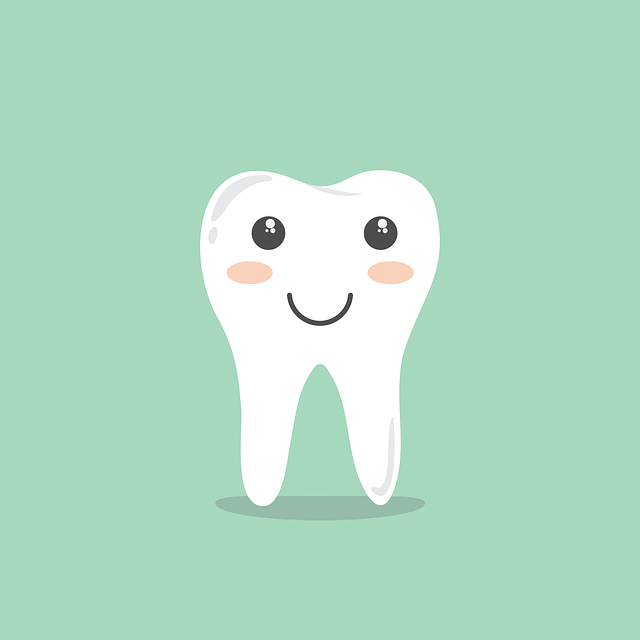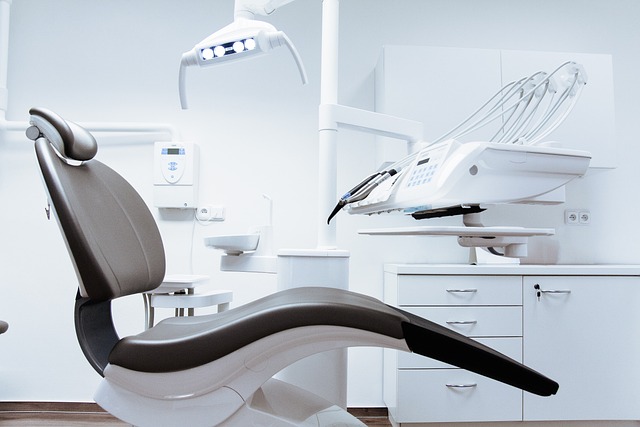Retainer Rescue: Handling a Broken Permanent Retainer
Retainer Rescue: Handling a Broken Permanent Retainer
Congratulations on completing your orthodontic treatment and achieving that beautiful, straight smile! We understand the excitement and satisfaction that come with wearing a permanent retainer, knowing it will help maintain the results you worked so hard to achieve. However, what happens when the unexpected occurs, and your retainer breaks? Fret not, as we are here to guide you through this common dilemma with confidence, knowledge, and a clear plan of action. In this article, we will explore the ins and outs of handling a broken permanent retainer, ensuring you can address this issue promptly and effectively. So, let’s dive in and rescue that retainer!
1. Understanding Permanent Retainers: A Key to Successful Orthodontic Treatment
Permanent retainers play a crucial role in ensuring the success of orthodontic treatment. These retainers are designed to keep the teeth in their corrected position after braces or aligners have been removed. Understanding how permanent retainers work can help patients make informed decisions and maintain their beautiful smiles for years to come.
A permanent retainer consists of a thin wire that is bonded to the back of the teeth. Unlike removable retainers, which can be taken out for eating or cleaning, permanent retainers are fixed in place and provide continuous support. Here are some key points to understand about permanent retainers:
- Long-term stability: Permanent retainers provide long-term stability by preventing teeth from shifting back to their original positions. This is particularly important during the first few months after braces or aligners have been removed, as the teeth are more prone to movement during this period.
- Comfort and convenience: Once the initial adjustment period is over, most patients find permanent retainers comfortable to wear. Since they are bonded to the back of the teeth, they are also convenient as they do not require daily insertion and removal like removable retainers.
- Maintaining oral hygiene: It is essential to maintain good oral hygiene with permanent retainers. Regular brushing and flossing are necessary to keep the wire and teeth clean. Specialized floss threaders or interdental brushes can be used to clean between the wire and the teeth.
- Professional monitoring: Regular visits to the orthodontist are crucial when wearing a permanent retainer. The orthodontist will check the condition of the retainer, make any necessary adjustments, and monitor the progress of the teeth.
By understanding the importance and benefits of permanent retainers, patients can take an active role in maintaining the results of their orthodontic treatment. With proper care and regular check-ups, permanent retainers can help ensure a lifetime of beautiful and straight smiles.

2. The Unexpected Happens: Dealing with a Broken Permanent Retainer
Dealing with a broken permanent retainer can be a frustrating experience, but rest assured, there are steps you can take to address this issue effectively. Here’s what you need to know:
1. Assess the damage: Take a close look at your broken permanent retainer to determine the extent of the damage. Is it completely detached, partially broken, or simply loose? Assessing the damage will help you understand the severity of the situation and determine the appropriate course of action.
2. Schedule an appointment with your orthodontist: It is crucial to consult with your orthodontist as soon as possible when you experience a broken permanent retainer. They are the experts in this field and will be able to provide you with the best advice and treatment options. During your appointment, your orthodontist will examine your retainer, assess the damage, and recommend the most suitable solution for your specific case.

3. Assessing the Damage: Identifying Signs of a Broken Retainer
When it comes to assessing the damage and identifying signs of a broken retainer, it’s important to pay attention to certain indicators. Here are some key things to look out for:
- Visible cracks or breaks: Inspect your retainer carefully for any visible signs of damage, such as cracks or breaks. These can occur due to wear and tear over time or accidental mishandling.
- Misalignment or shifting: If you notice that your teeth are shifting or becoming misaligned, it could be a sign that your retainer is broken. A broken retainer may no longer be able to hold your teeth in their proper position.
- Pain or discomfort: If you experience any pain or discomfort while wearing your retainer, it may indicate that it is broken. A broken retainer can put undue pressure on certain areas of your mouth, leading to discomfort.
Remember, if you suspect that your retainer is broken or damaged, it’s essential to consult with your orthodontist or dentist as soon as possible. They will be able to accurately assess the situation and provide appropriate guidance for repair or replacement. Taking prompt action can help prevent further complications and ensure that your retainer continues to do its job effectively.

4. Seeking Professional Help: Why It’s Important to Consult an Orthodontist
When it comes to orthodontic treatment, seeking professional help from an orthodontist is crucial. While some people may consider alternative options like DIY braces or online aligners, it is important to understand the potential risks and drawbacks associated with these choices. Here are a few reasons why consulting an orthodontist is imperative:
1. Expertise and Experience: Orthodontists are specialists who undergo extensive education and training to diagnose and treat dental and facial irregularities. They possess the knowledge and expertise to assess your unique needs and develop a personalized treatment plan that aligns with your specific goals. With their years of experience, they can handle complex cases and provide effective solutions.
2. Comprehensive Evaluation: During your initial consultation with an orthodontist, you can expect a thorough evaluation of your oral health. They will examine your teeth, bite, jaw alignment, and overall facial structure. This comprehensive assessment allows them to identify any underlying issues that may contribute to your orthodontic concerns. By addressing these underlying problems, an orthodontist can ensure that your treatment not only enhances the appearance of your smile but also improves your oral health in the long run.

5. A Timely Fix: Exploring Treatment Options for a Broken Permanent Retainer
A broken permanent retainer can be a hassle, but rest assured that there are several treatment options available to get it fixed in no time. Here are some options to consider:
1. Bonding the loose wire: If only a small part of the retainer wire is broken or loose, your orthodontist may be able to bond it back in place. This involves using dental adhesive to secure the wire to the teeth, restoring the retainer’s functionality.
2. Replacing the retainer: In cases where the retainer is extensively damaged or cannot be repaired, a replacement may be necessary. Your orthodontist will take impressions of your teeth to create a new retainer that fits perfectly. This new retainer will ensure that your teeth remain aligned and prevent any shifting.
6. Retainer Rehabilitation: Steps to Restore the Integrity of Your Retainer
Retainer rehabilitation is a crucial process that aims to restore the integrity of your retainer. By following these steps, you can ensure that your retainer continues to function optimally and serves its purpose effectively.
Step 1: Regular Cleaning
Proper cleaning is essential to maintain the hygiene and functionality of your retainer. Here’s what you need to do:
- Remove the retainer from your mouth and rinse it with lukewarm water.
- Gently brush the retainer using a soft-bristled toothbrush and non-abrasive toothpaste.
- Rinse it thoroughly to remove any remaining toothpaste.
- Soak the retainer in a denture cleaner or a mixture of equal parts water and vinegar for about 15 minutes.
- Rinse the retainer again before putting it back in your mouth.
Step 2: Regular Check-ups
It is essential to visit your orthodontist regularly to ensure that your retainer is in good condition. During these check-ups, your orthodontist will:
- Examine the retainer for any signs of wear or damage.
- Make any necessary adjustments to ensure a proper fit.
- Provide guidance on how to maintain your retainer’s integrity.
By following these steps diligently, you can prolong the lifespan of your retainer and keep it functioning effectively for a long time.
7. Maintaining Oral Health: Tips and Tricks to Prevent Future Retainer Mishaps
Taking care of your oral health is crucial, especially when it comes to preserving the condition of your retainer. Here are some effective tips and tricks to prevent any mishaps and ensure the longevity of your retainer:
1. Brush your teeth regularly: Brushing your teeth at least twice a day is essential for maintaining good oral hygiene. Use a soft-bristled toothbrush and fluoride toothpaste to gently clean your teeth, gums, and retainer. Remember to brush all surfaces of your teeth, including the areas around your retainer.
2. Clean your retainer daily: Just like your teeth, your retainer needs regular cleaning to prevent the buildup of bacteria and plaque. Remove your retainer and rinse it with warm water after each meal. Use a soft toothbrush and mild soap or non-alcoholic mouthwash to clean it thoroughly. Avoid using hot water or harsh chemicals, as they can damage the retainer material.
3. Avoid consuming sugary and acidic foods: Sugary and acidic foods can lead to tooth decay and damage your retainer. Limit your intake of sugary snacks, carbonated drinks, and acidic fruits. If you do indulge in such treats, remember to brush your teeth and clean your retainer afterwards.
4. Handle your retainer with care: Avoid placing your retainer in hot water, boiling liquid, or direct sunlight, as it can warp or deform the material. Additionally, refrain from biting or chewing on hard objects, such as pens or ice, as this can cause damage. Always store your retainer in its protective case when not in use.
5. Attend regular dental check-ups: Regular dental visits allow your dentist to assess the condition of your retainer and make any necessary adjustments. They can also provide professional cleaning to remove any stubborn plaque or tartar. Don’t skip these appointments, as they are crucial for maintaining your oral health and the effectiveness of your retainer.
By following these tips and tricks, you can maintain excellent oral health and prevent any future mishaps with your retainer. Remember, a little effort goes a long way in preserving the functionality and durability of your retainer, allowing you to enjoy a healthy and confident smile for years to come.
Frequently Asked Questions
Q: What should I do if my permanent retainer breaks?
A: If your permanent retainer breaks, it is essential to seek professional assistance from your orthodontist as soon as possible.
Q: Can I fix a broken permanent retainer on my own?
A: It is not recommended to attempt fixing a broken permanent retainer on your own. Orthodontic expertise is required to ensure proper repair and alignment.
Q: Why is it important to address a broken permanent retainer promptly?
A: Addressing a broken permanent retainer promptly is crucial to prevent further dental complications. Delaying treatment can lead to shifting teeth and potential misalignment.
Q: What can happen if I ignore a broken permanent retainer?
A: Ignoring a broken permanent retainer can result in teeth shifting back to their original position, reversing the progress achieved through orthodontic treatment.
Q: How long does it typically take to repair a broken permanent retainer?
A: The duration of the repair process for a broken permanent retainer varies depending on the severity of the damage. Your orthodontist will assess the situation and provide an estimated timeline.
Q: Will repairing a broken permanent retainer be painful?
A: Repairing a broken permanent retainer is generally not painful. The orthodontist will ensure your comfort throughout the process, and any discomfort should be minimal and temporary.
Q: Can a broken permanent retainer be replaced?
A: In many cases, a broken permanent retainer can be replaced. However, the decision is ultimately made by your orthodontist after evaluating the condition of your teeth and the retainer.
Q: What are the potential costs associated with fixing a broken permanent retainer?
A: The cost of fixing a broken permanent retainer varies depending on the extent of the damage and the specific treatment required. It is best to consult with your orthodontist to determine the potential costs involved.
Q: How can I prevent my permanent retainer from breaking?
A: To prevent a permanent retainer from breaking, it is important to avoid biting on hard or sticky foods, refrain from using your teeth to open packages, and maintain regular dental check-ups to identify any potential issues early on.
Q: Is it possible to switch to a removable retainer after a permanent retainer breaks?
A: Depending on your orthodontic situation, it may be possible to switch to a removable retainer after a permanent retainer breaks. Your orthodontist will assess your teeth and recommend the most suitable option for you.
Q: Can I continue with my regular oral hygiene routine after my permanent retainer breaks?
A: It is crucial to continue with your regular oral hygiene routine even after your permanent retainer breaks. Brushing and flossing should be done carefully around the retainer, ensuring that your teeth and gums remain healthy.
To Conclude
In conclusion, dealing with a broken permanent retainer may seem like a daunting task, but with the right knowledge and approach, you can easily navigate this situation. Here are the key takeaways to remember:
1. Act promptly: As soon as you notice any damage or discomfort with your permanent retainer, it is crucial to consult your orthodontist without delay. Early intervention can prevent further complications and ensure a quick resolution.
2. Avoid DIY fixes: While it may be tempting to try fixing a broken retainer on your own, it is advisable to refrain from doing so. Instead, seek professional assistance from your orthodontist, as they possess the expertise and tools necessary for a safe and effective repair.
3. Be prepared for potential discomfort: It is common to experience some discomfort or soreness after a retainer breaks. However, this is usually temporary and can be managed with over-the-counter pain relievers or orthodontic wax. Follow your orthodontist’s instructions to alleviate any discomfort during the repair process.
4. Consider replacement options: Depending on the severity of the break, your orthodontist may recommend replacing the entire retainer or just the affected part. Be open to discussing the available options and consider the long-term benefits of each.
5. Maintain good oral hygiene: Throughout the repair process, it is essential to maintain good oral hygiene. Clean your teeth and retainer as instructed by your orthodontist to prevent any further issues or complications.
Remember, a broken permanent retainer is not a cause for panic. By promptly seeking professional help, following proper care instructions, and being patient during the repair process, you can effectively handle this situation and preserve the integrity of your orthodontic treatment.






